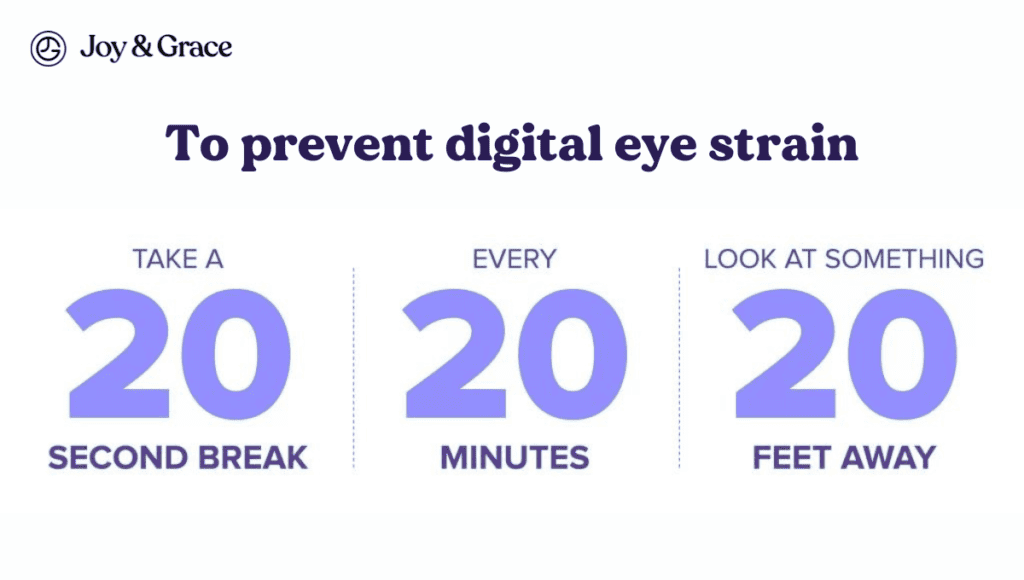In today’s digital world, most of us are no strangers to the tension that ever-present screens can cause. The usual suspects? Our beloved computers. Weary shoulders, aching backs, and, most concerningly, persistent neck pain can be a daily reality for a lot of people.
This discomfort can quickly sneak up on you after relentless hours hunched over a keyboard. If this sounds like you, join us as we shed some light on the actual cause of neck pain from computer use and discover simple strategies for relief.
Why Do My Neck And Shoulders Hurt When I Use The Computer?
The truth is that neck and shoulder pain from computer use stems from a combination of factors, which are, in turn, usually a result of having too much work on your plate. These include psychological and social factors, such as:
- Mental fatigue at the end of your workday
- Not having enough colleagues to share the workload
Even though we can’t change some of these factors, there are things we do have control over. Here are a few of them:
- Limiting computer usage to no more than eight hours a day.
- Cultivating healthy posture habits.
- Ensuring we take regular breaks when sitting for extended periods
Let’s dissect these factors one by one.
1. Poor posture

Let’s start with poor posture. You might not notice it, but you may be hunching over or straining your neck while working or browsing. When you do this, your head assumes the forward head posture, which is when your head leans too much in front of your shoulders.
This position can strain the upper back and neck muscles.
Consider the weight of the human head, about 10–12 pounds, similar to the weight of a bowling ball. Unsurprisingly, when your head tilts forward to look at your screen, your neck and shoulder muscles work even harder to keep your head afloat.
2. Poor ergonomics

Poor posture is often the result of a poorly ergonomic workplace. For example:
- When the computer monitor is positioned too high or too low, it constantly forces the neck to tilt upward or downward. This also strains the muscles and structures of the neck.
- If the screen is too far away, you’re more likely to assume the forward head posture.
- An improperly adjusted chair can result in an uncomfortable sitting position.Maintaining this position for prolonged periods of time can lead to poor posture and increased tension in the neck and shoulder areas.
- Similarly, a chair with poor lower back support can cause you to lean forward, possibly straining the neck.
3. Prolonged sitting
Sitting for hours a day can also contribute to this discomfort. A study aimed to see if there are changes in oxygen levels and blood flow in the trapezius muscle in office workers with and without trapezius myalgia (pain) while working on a computer.
The trapezius is the muscle that spans the back of your neck and shoulders.
Twenty right-handed office workers took part, ten with trapezius pain and ten without. They performed typing and mouse tasks for an hour.
According to the results, working on a computer for more than an hour can decrease oxygen levels and blood flow in the trapezius muscle.
4. Stress

For instance, a study looked into the reasons why computer office workers keep having neck and shoulder pain. At the start of the study, 54.9% reported neck and shoulder pain, and after a year, 34.3% still had it.
The study found that negative expectations about pain in the coming year and a tendency to somatize were linked to the persistence of pain. Somatization is when you experience psychological stress as physical symptoms.
Another study examined the impact of occupational stressors, such as glare and psychosocial stress, on young women during computer work. They had 43 women do four short computer tasks with different types of stress:
- Easy work
- Glare
- Mental stress
- Both glare and mental stress
Glare is the annoying, bright light reflected off your screen that makes it hard to see what's on it.
The results showed that exposure to direct glare increased blood flow in the trapezius muscle. It also caused an increased blink rate and forward head posture. Psychological stress caused a temporary increase in trapezius muscle activity and a more forward-bent posture.
In the study, forward bending toward the computer screen was correlated with higher productivity. This suggests that it may be a concentration or stress response.
The study suggests that visual and psychological factors should be considered when setting up computer workspaces to reduce eye and muscle strain.
What Are The Symptoms Of A Tech Neck?
Neck pain from computer use has become commonplace as technology continues to progress. So much so that experts gave it its own name – Tech Neck. Aside from neck and shoulder pain, a tech neck can cause the following symptoms:
- Stiffness
- Upper back pain
- Headaches
- Restricted movement in the neck and shoulders
In rare instances, a tech neck can also cause a condition called cervical radiculopathy. You might know this as a “pinched nerve.” If this happens, you might also experience the following symptoms:
- Burning or sharp pain
- Pain that radiates down the arm, hands, and fingers
- Tingling or numbness
- Weakness of the arm
How Do I Stop My Neck And Shoulders From Hurting When I Work On My Computer?

Lucky for you (and us), there are several effective strategies to help stop neck pain from computer use right in its tracks. These strategies also serve as preventive measures to stop neck and shoulder pain from recurring
Take regular breaks
As mentioned earlier, sitting too long in one position strains your body. We recommend a 5–10 minute break for every hour spent staring at a computer screen. These breaks help relax your muscles and protect your eyes from strain.
According to a study, regularly taking active breaks or changing sitting posture shortened recovery time and reduced the recurrence of neck and lower back pain.
Gentle exercises and stretches
Incorporating gentle neck and shoulder exercises into your day can help alleviate pain from office work. According to a study from 2007, resistance and stretching exercises performed 1-2 times daily reduced neck discomfort among computer workers.
We’ll mention some further down in the article.
Hydrate
Drink plenty of water to keep tissues hydrated and flexible, helping prevent any discomfort related to computer use.
Eye Care

Follow the 20-20-20 rule: every 20 minutes, look at something 20 feet away for at least 20 seconds to reduce eye strain. This also helps prevent you from straining your head forward to see the screen more clearly.
How Do I Arrange My Workplace To Avoid Neck Pain From Computer Use?

Creating an ergonomic and comfortable workspace is not just about aesthetics. It’s also an investment in your well-being and productivity. Here are some tips to help you arrange your workspace:
Monitor Placement
Position your computer monitor at eye level. The top of the screen should be at or slightly below your eye level. This helps reduce strain on your neck.
Screen Distance
Keep your monitor at a comfortable viewing distance, typically around an arm's length away.
Ergonomic Chair
Use a chair that supports the natural curve of your spine. Your feet should be flat on the ground, and your knees should be at a 90-degree angle.
Desk Height
Ensure that your desk is at a comfortable height. Your elbows should form a 90-degree angle when resting on the desk. Your wrists should be straight when typing. Your desk should not be too high to avoid pushing your shoulders upward.
Keyboard and Mouse
Place your keyboard and mouse close enough so your elbows are close to your body. They should form an angle slightly greater than 90 degrees. This helps prevent reaching and straining your shoulders.
Document Holder
If you frequently refer to documents while working, use a document holder to position them at the same height and distance as your monitor. This reduces the need to look down or turn your head constantly.
Monitor Tilt
Tilt your monitor slightly backward (10–20 degrees) to reduce glare and reflections. This can help prevent you from leaning forward or tilting your head. Alternatively, you can use an anti-glare screen.
Lighting
Ensure your workspace is well-lit to reduce eye strain. Position the light source so that it doesn't create a glaring screen. This means the light source should not be directly above your screen.
Phone Placement
If your work requires you to take calls, use a headset or speakerphone to avoid cradling the phone between your ear and shoulder.
By implementing these principles, you can create a comfortable workspace that minimizes the risk of neck pain.
What Is The Correct Shoulder Posture When Working On The Computer?
The correct shoulder posture is also important to avoid neck and shoulder pain when working on your computer. As mentioned earlier, sit upright. You shouldn’t be hunching over, nor should you overarch your back.
Try to keep your shoulders relaxed and low, not shrugged up near your ears. Also, be mindful not to roll your shoulders forward. We know we’re prone to doing this when stress takes over.
7 Simple Stretches For Neck Pain From Computer Use
Here are some simple stretches to help relieve neck pain from computer use:
- Sit up straight and slowly tilt your head to one side, bringing your ear toward your shoulder.
- Hold for 15–30 seconds and repeat on the other side.
- Gently turn your head to one side, looking over your shoulder.
- Hold for 15–30 seconds and repeat on the other side.
- Slowly lower your chin toward your chest, feeling a stretch in the back of your neck.
- Then slowly extend your neck as if you’re looking up at the ceiling.
- Hold each position for 15–30 seconds.
- Roll your shoulders forward in a circular motion for 10–15 seconds, then roll them backward.
- Sit or stand with your back straight.
- Clasp your hands behind your back and straighten your arms, opening up your chest.
- Hold for 15–30 seconds.
- Stand in a doorway with arms raised and elbows at shoulder level.
- With your forearms against the door frame, lean forward through the door.
- Feel a gentle stretch in the front of your chest and upper arms.
- Hold for 30 seconds; repeat twice. Adjust arm height for a thorough stretch.
- Sit in a chair with your hands behind your head.
- Lean back over the chair, pushing your chest forward.
- Hold for 10 seconds and repeat ten times.
6 Gentle Exercises To Help Prevent Neck And Shoulder Pain From Computer Use
Incorporate these easy exercises into your daily routine to strengthen your neck, shoulders, and upper back. If done regularly, they can help prevent neck pain from recurring.
Remember, along with stretching at your desk, engaging in activities outside your office space can also greatly contribute to maintaining neck and shoulder health. However, it’s always recommended to consult your healthcare provider before engaging in a new exercise routine.
- Overhead Press
- Stand with feet hip-distance apart, knees slightly bent.
- Tuck elbows into sides, forearms parallel to the floor.
- Carry a light dumbbell in both hands.
- Slowly raise arms overhead while straightening them, pinching shoulder blades back.
- Pause at the top, then slowly lower.
- Do up to 15 repetitions for 3 sets, with a 60-second rest between sets.
- Rows
- Attach an exercise band at chest height to a sturdy object.
- Stand facing the band, arms straight out in front, holding an end in each hand.
- Pull your arms back, bringing elbows into your sides and bending them 90 degrees.
- Pause, then slowly release the band.
- Do up to 15 repetitions for 3 sets, with a 60-second rest between sets
- Shoulder Blade Squeezes
- Sit or stand up straight.
- Squeeze your shoulder blades together, pulling them back.
- Hold for 5–10 seconds and release.
- Repeat 10-15 times.
- Neck Isometrics
- Sit up straight with your shoulders relaxed.
- Place your hand on the side of your head and press your head into your hand, resisting the movement.
- Hold for 5–10 seconds, then switch to the other side.
- Repeat 5–10 times on each side.
- Neck Retraction
- Sit or stand with good posture.
- Gently pull back your chin, keeping your head level.
- Hold for a few seconds and then release.
- Repeat 10-15 times.
- Scapular Wall Slides
- Stand with your back against a wall.
- Slide your arms up the wall, keeping your elbows and wrists in contact with the wall.
- Lower your arms and repeat for 10–15 repetitions.
Can Computer Use Cause Long-Term Neck Problems?
Yes, using computers for long periods without proper attention to posture can contribute to long-term neck problems. If you don't take steps to address it, tech neck can cause lasting changes in the structures of your neck and spine, becoming more noticeable as you age:
- One consequence is thoracic kyphosis, or a hunched back. It’s often a result of sitting with poor posture. Another concern is early-onset arthritis or inflammation of your joints. This can manifest as pain and stiffness in your neck.
The structures of your spine can also wear down over time, leading to persistent pain and stiffness. In worst-case scenarios, you might become more prone to spinal fractures. The discs between the bones of your spine can also become compressed, causing pain and nerve issues. - The nerves in your neck can also become compressed, resulting in cervical radiculopathy.
As mentioned earlier, this can result in pain, numbness, and weakness that can travel down your arm.
Takeaway
We’ve all welcomed the rise of computers. However, prolonged use of these convenient devices can take a toll on our bodies. Whether in the comfort of our homes or offices, we often ignore the importance of proper posture and proper ergonomics.
Undoubtedly, poor posture and improper workspace arrangement are the two main factors contributing to neck pain from computer use. Other factors include prolonged sitting and stress.
But, luckily, these factors are easy to address. All it takes is a little compassion for our minds and bodies. So take frequent breaks and get your body moving. Practicing these simple changes can help ease the pain and prevent future complications.















